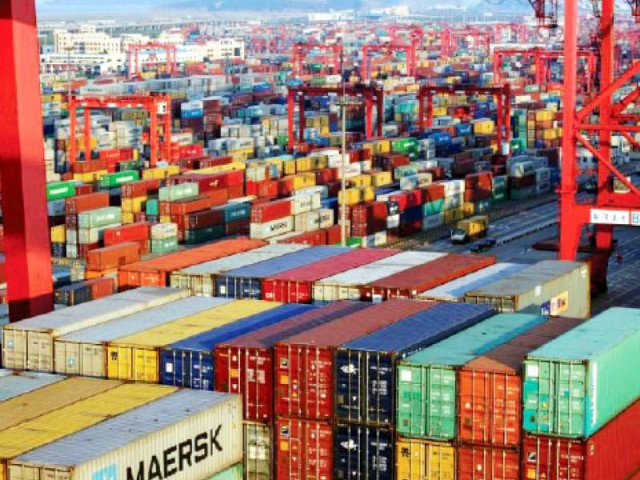84% surge in import bill due to global price hike
Increase in demand, supply chain disruption cause escalation in costs

The escalation in price of global commodities like energy, foods, and industrial equipment alone have spiked Pakistan’s import bill by almost 84% in the first two-months (Jul-Aug) of current fiscal year 2022, suggesting that demand has largely remained muted in the domestic economy.
“Global demand escalation and supply chain disruption caused by container shortages are mainly responsible for escalation in costs (import price),” Pakistan Business Council (PBC) said in a study titled ‘Using Data to Explain the Surge in Pakistan’s Imports - Jul-Aug’.
“(The) incremental imports of commodities are due to increase in global prices over which Pakistan has no control.”
Pakistan’s import bill surged 74% (or $5.17 billion) to $12.17 billion in the two months compared to $7 billion in the same period last year when Covid-19 pandemic peaked in the country, according to the latest data reported by Pakistan Bureau of Statistics (PBS) the other day.
While this increase in import bill was significant, it was important to break the number down to better understand whether the surge in imports was led by volumetric (quantity-wise) growth or this was due to escalation in global commodity prices.
The analysis helped better understand demand-side trends for imported commodities like energy (oil and gas), foods (wheat, sugar and cooking oil), raw material (including cotton) and plant and machinery for industrialisation in the domestic economy and suggest the way forward for economic growth in the country.
The excessive surge in import payments had given an impression that demand for the commodities was on upside which would help in taking higher economic growth this fiscal year. The first two-month import data breakdown, however, suggests the growth is yet to accelerate for the year and impact of expensive imports would be largely inflationary in the economy.
The increase or decrease in import values for those import groups for which both ‘quantity and value’ of imports are available through federal bureau of statistics (PBS) has been measured through two types of variances; price variance and volume variance. These import groups represent 46% of incremental imports July-August 2021 over July-August 2020, according to PBC.
Out of the total increase in import bill by $5.2 billion in the two months; 54% increase was recorded in import of machinery and transportation sector. The rest of the 46% surge in import bills was by petroleum, food, metals, textiles, agriculture and chemicals and miscellaneous, according to the study.
The import bill of petroleum group increased 88.59% due to price escalation in global market, while rest of the 11.40% growth in energy import bill was seen on the part of uptick in demand.
Similarly, import payment for agriculture and chemicals surged by 89% due to price escalation, while rest of 11% increase was demand driven.
Foods imports surged 85.68% due to price hike in global markets, while rest of 14.31% was on the part of increase in demand.
Some of import increase is due to food and agricultural shortages. Imports for these are unavoidable for reasons of food security, checking domestic inflation and securing inputs for textile exports. “Reviving agriculture output is the sustainable solution,” PBC said.
Temporary Economic Refinance Facility (TERF) led higher machinery imports will pave the way for increase in exports, it said.
Developing indigenous sources of energy is a longer-term substitute for imports. Import of buses and trucks is necessary to address needs of passengers and cargo transportation. Import of cars in CKD/SKD allows for local value-addition.
Published in The Express Tribune, October 2nd, 2021.
Like Business on Facebook, follow @TribuneBiz on Twitter to stay informed and join in the conversation.


















COMMENTS
Comments are moderated and generally will be posted if they are on-topic and not abusive.
For more information, please see our Comments FAQ